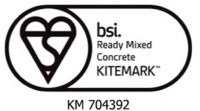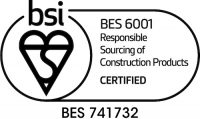Types of Screed
There are five main types of screed that we use here at EasyMix, each one providing their own strengths and unique characteristics. Depending on what you require screed for, certain types will be preferable over others.
Bonded screed
This mix is fully bonded to the substrate - the underlying layer- using a bonding agent. With a thickness ranging from 25-40mm, it is typically used for surfaces that will experience heavy loads, such as driveways or car parks, but it can also be used when cast-in water pipes are being used in underfloor heating system.
Floating screed
Floating screed is installed at a depth of approximately 35mm, usually in places where underfloor heating is present or that thermal or acoustic insulation needs to be used. It typically has a thickness of 65mm-75mm, and its main purpose is to increase the heating efficiency of a building.
Liquid screed
A very popular screed, also known as self-compacting or calcium sulphate screed, it sets in 24-48 hours, which is the main factor in its widespread usage. Liquid screed can be installed as a ‘bonded’ or ‘floating’ screed, with thicknesses of 30mm and 40mm respectively, depending on how it is installed.
Unbonded screed
This type of screed is laid on top of a damp-proof membrane which sits between the screed and the concrete base. Thanks to the membrane, the likelihood of shrinkage, settlement and damp occurring is significantly reduced. It is available in two mixes: a sand/cement mix, which has a thickness of 50mm, and a calcium sulphate mix, which is 30mm thick.
Underfloor heating screed
Screed is generally used in conjunction with underfloor heating, but this type of screed is different in that it is laid directly on top of the heating system, rather than over a layer of insulation above it. As there’s no insulation layer, the heating system does not suffer from cold spots, which means the output is more consistent.
The underfloor heating screed can have a thickness from anywhere between 65mm and 75mm for sand or cement mixes, to 50mm for a strengthened or anhydrite mix. If a calcium sulphate mix is being used, a thickness of 20mm is required.




